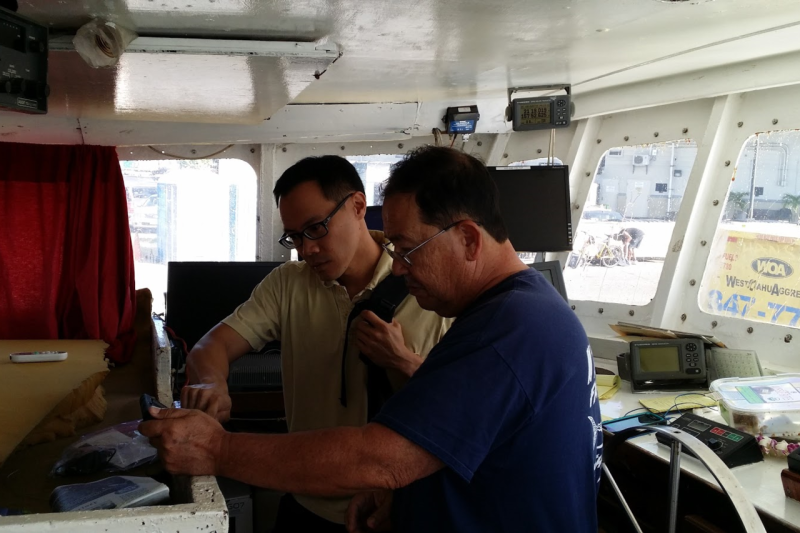With 145 vessels completing more than 1,600 trips annually, the Hawaiʻi longline fisheries set more than 20,000 fishing lines each year. Data collected from all of these trips provide critical information for monitoring fishing quotas and fish populations. For each set, captains complete a paper logsheet and staff at our Pacific Islands Fisheries Science Center process it—this takes a lot of time. A pilot electronic reporting project demonstrates that the new technology is showing promise in streamlining and shortening this process.
Most vessels target tuna on deep-set trips, with some targeting swordfish on shallow-set trips. Once a vessel returns to the dock, the captain has 72 hours to submit the logsheets. Then, our staff perform checks and validations before entering the data, a process that takes about 3 weeks. This lag can make monitoring less efficient.
We conducted a project in collaboration with the Fisheries Information System program using electronic reporting technologies. It showed that these technologies can improve the quality and timeliness of the data for scientists, managers, and industry.
The electronic reporting initiative had its beginnings in 2007 when the Western Pacific Regional Fishery Management Council and NOAA Fisheries allowed longline permit holders the option to submit their logsheets electronically. In 2016, the Fisheries Information System program provided funding to the science center to develop electronic reporting applications and provide tablet computers to the Hawaiʻi fisheries. FIS is a state-regional-federal collaboration with the mission of improving access to comprehensive, high-quality, timely fisheries information.
The current project began in 2018 with about 10 volunteer vessels. The captains and crew use the tablets and software to enter information about fishing activities such as start and end times for trips and fishing sets. The captain verifies the data and sends it to us through the existing Vessel Monitoring System. All data are encrypted to keep them secure.
IT specialist Ashley Tomita explains how the pilot project has helped streamline the reporting process. “Instead of returning to port with carbon copies of paper logbooks to be submitted and input by science center staff,” says Tomita, “captains can electronically send their data throughout the trip, while staff can move directly to validation and quality control checks, saving countless hours of data entry.”
Throughout the process, open communication between industry, science center staff, NOAA Office of Law Enforcement Vessel Monitoring System personnel, and software developers has been integral.
“At first, some captains were reluctant to join the project, but word of mouth about ease of use spread quickly among the fleet, helping increase participation,” notes Nathan Chan, who is a part of the Electronic Reporting team. As more captains have joined the project, we have incorporated their feedback and added features to make the software more helpful to industry. For example, the application now features an end-of-trip catch summary of all the species and the number of fish caught, fulfilling a request from captains. The second round of tablets included styluses, which are easier to use than finger taps on a moving fishing vessel.
As of 2020, about 43 percent of the vessels in the fleet are voluntarily using the tablets. This allows our staff to bypass data entry and perform validation and quality control within one day. In the future, the goal is to process daily fishing activity as it comes in.
“The closer we can get to real-time data processing,” says Tomita, “the better estimates we can make as to where we are in the quota, which would allow industry to make decisions on when to send their vessels out or call them back.”
The Western Pacific Regional Fishery Management Council will consider mandatory submission of longline catch and effort data with implementation in 2021.




